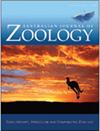塔斯马尼亚标志性山虾Anaspides tasmaniae (Thomson, 1893)的遗传结构和新发生记录揭示了其在塔斯马尼亚南部的宗教分布
IF 1
4区 生物学
Q3 ZOOLOGY
引用次数: 2
摘要
摘要1894年诞生的标志性的“山虾”是塔斯马尼亚特有的,栖息在各种淡水栖息地,如山潭和小溪,以及洞穴内的溪流。它们经常被贴上“活化石”的标签,因为它们与三叠纪的近亲非常相似。在2015年之前,只有两个物种被发现,但最近的研究发现了至少七个物种。Anaspides的模式种a . tasmaniae (Thomson, 1893)以前被认为分布在整个塔斯马尼亚州,但在2016年的一次审查之后,该物种仅在惠灵顿山东部和东南部的一小范围内得到证实,塔斯马尼亚其他地区的Anaspides可参考其他物种。在此,我们在广泛的实地调查的基础上,对塔斯马尼亚蛛的分布和遗传结构进行了详细的评估。A. tasmaniae的分布范围扩大到惠灵顿山西北50公里处的菲尔德山国家公园及其周围的四个独立地区。从48个样本中恢复的塔斯马尼亚古猿遗传结构表明,这种不间断的分布不太可能是人为迁移的结果,而可能反映了更新世冰川高峰时期以前连续范围的冰期后再现。特别有趣的是在卡扎德·杜姆洞穴入口处观察到的阿纳斯皮德斯的同音性记录,塔斯马尼亚古猿和斯瓦尼古猿都栖息在流入的溪流中。本文章由计算机程序翻译,如有差异,请以英文原文为准。
Genetic structure and new occurrence records of the iconic Tasmanian mountain shrimp Anaspides tasmaniae (Thomson, 1893) (Anaspidesidae : Anaspidacea) reveal relictual distribution in southern Tasmania
Abstract. The iconic ‘mountain shrimps’ of the genus Anaspides Thomson, 1894, are endemic to Tasmania, inhabiting various freshwater habitats such as mountain tarns and creeks, as well as streams inside caves. They are often labelled as ‘living fossils’ because of their close resemblance to their Triassic relatives. Prior to 2015, only two species were recognised but recent studies have uncovered a total of at least seven species. The type species of Anaspides, A. tasmaniae (Thomson, 1893), was previously believed to occur throughout Tasmania, but following a review in 2016, this species was confirmed only from a small range on the east and south-east side of Mt Wellington, with Anaspides from other parts of Tasmania referable to other species. We herein provide a detailed assessment of the distribution and genetic structure of A. tasmaniae based on extensive field surveys throughout the ranges of all species of Anaspides. The distribution of A. tasmaniae is extended to include four separate localities in and around the Mt Field National Park, 50 km north-west of Mt Wellington. The recovered genetic structure of A. tasmaniae based on 48 specimens indicates that the disjunct distribution is unlikely to be the result of artificial translocation but, instead, probably reflects postglacial relictualisation of a formerly continuous range present during Pleistocene glacial maxima. Of particular interest is the record of syntopy in Anaspides, observed at the entrance of Khazad Dum cave, where both A. tasmaniae and A. swaini inhabit the inflow stream.
求助全文
通过发布文献求助,成功后即可免费获取论文全文。
去求助
来源期刊
CiteScore
2.40
自引率
0.00%
发文量
12
审稿时长
>12 weeks
期刊介绍:
Australian Journal of Zoology is an international journal publishing contributions on evolutionary, molecular and comparative zoology. The journal focuses on Australasian fauna but also includes high-quality research from any region that has broader practical or theoretical relevance or that demonstrates a conceptual advance to any aspect of zoology. Subject areas include, but are not limited to: anatomy, physiology, molecular biology, genetics, reproductive biology, developmental biology, parasitology, morphology, behaviour, ecology, zoogeography, systematics and evolution.
Australian Journal of Zoology is a valuable resource for professional zoologists, research scientists, resource managers, environmental consultants, students and amateurs interested in any aspect of the scientific study of animals.
Australian Journal of Zoology is published with the endorsement of the Commonwealth Scientific and Industrial Research Organisation (CSIRO) and the Australian Academy of Science.

 求助内容:
求助内容: 应助结果提醒方式:
应助结果提醒方式:


